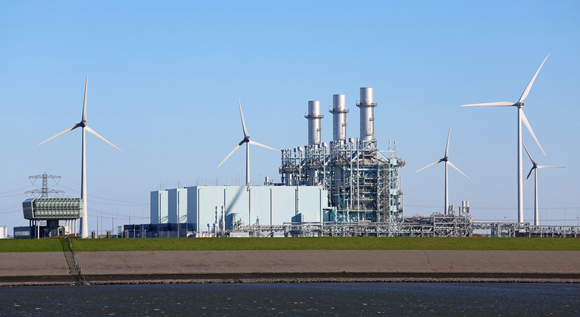Key issues presented
How to make the electricity market fit for the Energy Transition? A fundamental policy decision on this question is due to be taken in this year. The Federal Ministry for Economic Affairs and Energy has now tabled the key issues to be taken into account in preparing for this decision.
 © Fotolia.com/ Kara
© Fotolia.com/ Kara
To take the Energy Transition forward systematically and according to a defined schedule: the 10 Point Energy Agenda put forward by the Federal Ministry for Economic Affairs and Energy lists the crucial issues involved and the next steps to be taken to this end. The milestone reform of the Renewable Energy Sources Act (EEG) in 2014 is to be followed this year by important orientation points for the future electricity market: the nuclear power plants are to be successively taken off line, wind and solar energy are taking on more responsibility, the European markets are moving closer together. The balance between supply and demand, between generation and consumption, has to be maintained even under these changing conditions – for example when the sun is not shining and the wind is not blowing. This makes it necessary to re-design the "electricity market for the Energy Transition." At the end of March, Federal Minister for Economic Affairs and Energy Sigmar Gabriel presented the key issues in this context that are to be taken into account in preparing for the forthcoming decisions. These refer to the four closely linked topics of: the electricity market, the contribution to be made by the power sector to reducing CO2 emissions (known as the "climate contribution"), promoting heat-and-power cogeneration, and extending and upgrading the grid.
What precisely are the details?
Transformation of the electricity market
The BMWi submitted its Green Paper "An electricity market for the Energy Transition" for public debate until early March. It presents options for an energy supply system that will be secure, cost-effective and environmentally friendly in future, too, and also addresses questions such as: what role should conventional power plants play going forward? How can fluctuating electricity production from wind and solar be cushioned? And which incentives should be given to encourage consumers to use electricity precisely when it is cheapest? More than 700 comments were received. The consultation shows that it is generally agreed that further optimization will be needed to evolve today's electricity market into a viable electricity market 2.0 for the long-term future. A large number of contributors also considered it advisable to introduce a capacity reserve. The key-issues presented also identify the actions that will be required for an electricity market 2.0. These include for example improving on accounting grid management, which means obliging electricity suppliers and traders to buy in enough power for their customers; any providers buying less than is actually needed should bear the cost. A further point is enhancing flexibility options: the aim here is to balance out fluctuations in generation from renewable sources due to changing weather conditions. More versatile power plants, heat-and-power cogeneration, Europe-wide electricity trading, load management and energy storage should in future be enabled to compete on a level playing field to deliver the best solutions. A capacity reserve for unforeseeable emergencies will shore up the electricity market still further. Since July 2014 the BMWi has been conducting a transparent and open process for evolving the electricity market in which all relevant stakeholders such as industrial and societal associations, the federal states and non-governmental organisations are engaging in the debate via the "Electricity Market Platform" and other channels. In October 2014 the BMWi presented its Green Paper on the electricity market. In June a White Paper is to follow, specifying concrete actions.
"Climate contribution"
In its Progress Report on the Energy Transition and its Climate Action Programme, the Federal Government re-affirmed in December 2014 that Germany stands by its ambitious target: to reduce emissions of greenhouse gases by 40 per cent by 2020 (compared to 1990). To make it possible to achieve this climate target for 2020, the electricity market must also make a further effort and reduce its CO2 output.
In a parliamentary debate, Federal Minister for Economic Affairs and Energy Sigmar Gabriel explained the BMWi's proposal to introduce a "climate contribution" in order to save the necessary extra 22 million tons of CO2 in the electric power sector. Under this model, power plant operators would be required to make a "climate contribution" if a generating unit emits CO2 in excess of a certain allowance. However, this would only apply to power plants that participate in the European Emissions Trading System and are more than 20 years old. Gabriel stressed Germany's exemplary character in the transformation of the energy supply system: "Europe's and Germany's contribution to protecting the climate is not measured in terms of whether (the reduction achieved is) 35, 38, or 41 per cent, but that a highly industrialised nation is capable of achieving ambitious climate change mitigation targets and yet not impeding but rather advancing economic and industrial development," said the Minister.
Heat-and-power cogeneration
The Minister also told Parliament how combined heat-and-power generation (CHP) is to be promoted going forward: high-efficiency and climate-friendly heat-and-power cogeneration is to continue to play an important role in the context of the Energy Transition in the future, too. To facilitate this, the currently valid Combined Heat and Power Act (KWK-Gesetz) is to be amended. Initial outlines for the amendment are set out in the Government's key-issues paper. The important thing is that in future financial assistance for cogeneration should be compatible with the other targets of the Energy Transition.

